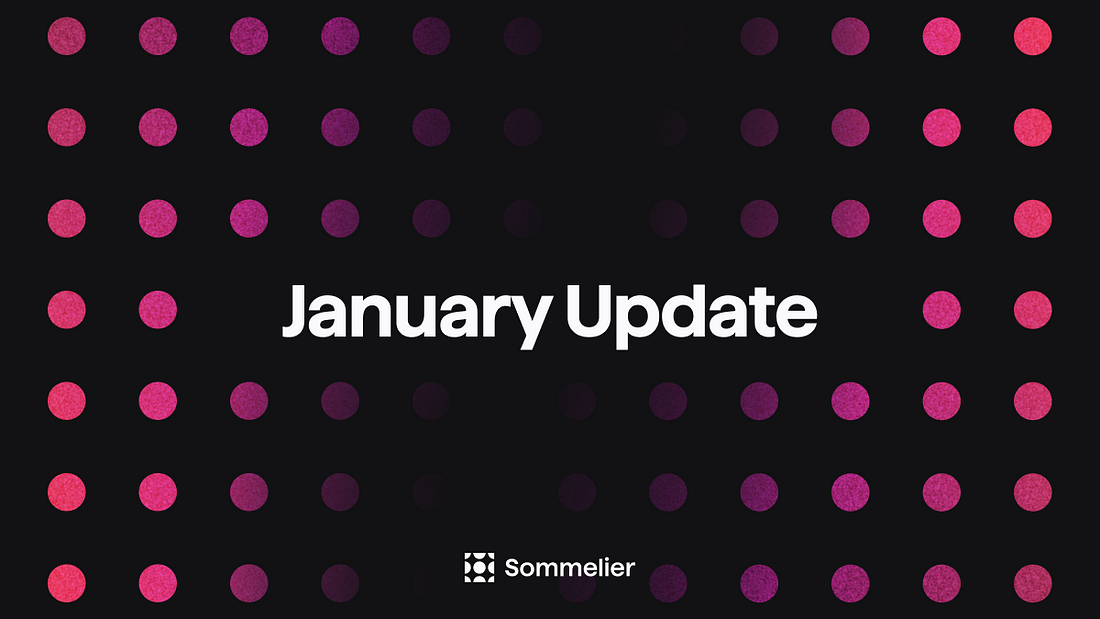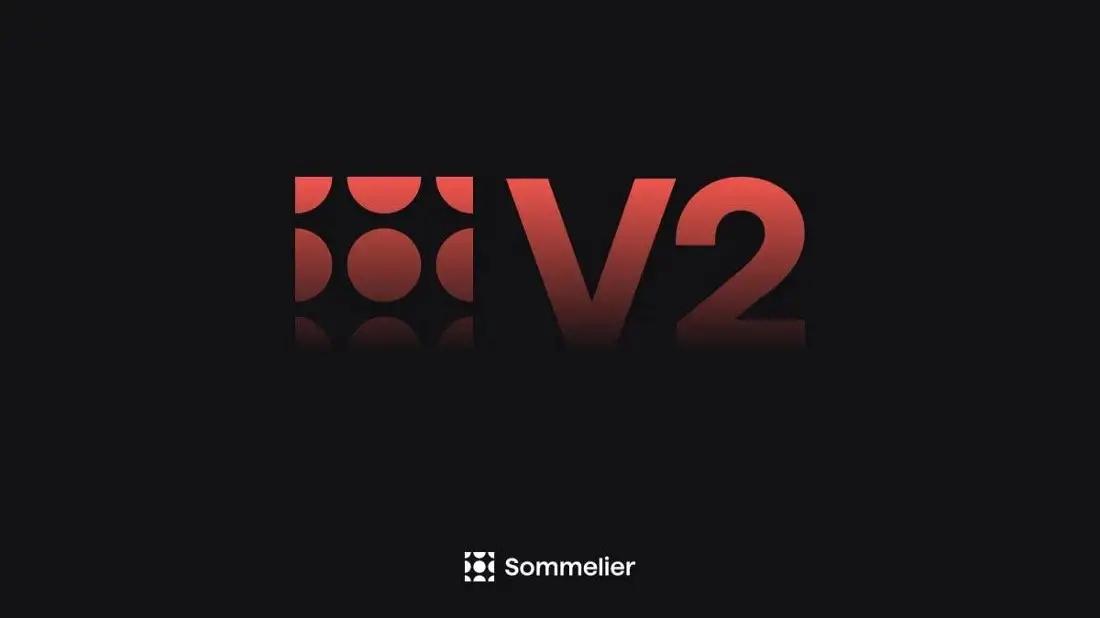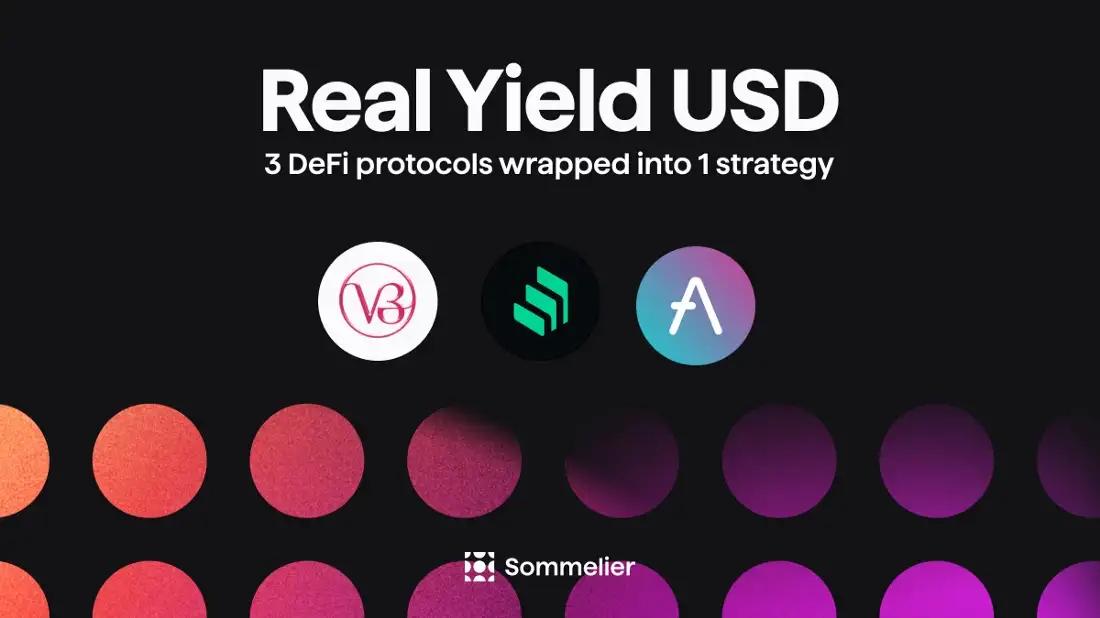Sommelier This Week - May 6th 2021: How This Week’s Protocol and App Progress Weaves Together to Make a Product
This week, Sommelier co-founder and VP of Product, Jack Zampolin, shares what’s top of mind on the Sommelier app and protocol progress. “I got a sneak peak at the demo for Sommelier’s app on Uniswap v3,” says Jack. “It’s working! May 12th is our launch date and we’ll have one week of nonstop events on Sommelier and Uniswap v3. I’m very excited about that. Next week we’re going to launch the beta.”

NOTE: Sommelier Uniswap LP Impermanent Loss management application is live at https://app.sommelier.finance. Take a position today!
On the protocol side, the team also made some great progress this week. Jack reports: “Steven from the VolumeFi team has been spiking on the Cellar contract, which is basically the fungibility of Uniswap v3 liquidity into a pool share”.
Fungibility is the property of a thing, which means that any one piece of it is equivalent to another piece of it. Jack explains:
“In Uniswap v2, when you deposit liquidity into the Uniswap pool, the share of that pool that you get is fungible. However, with Uniswap v3 because you have to specify where you’re deploying your liquidity within the pool, that has made liquidity within Uniswap v3 pools nonfungible. That’s because each liquidity share has to have additional data to it. So, the contract that Steven is working on has a lot of these nonfungible positions and makes a fungible share out of that. The pool calculates the total value of all of the liquidity within the nonfungible shares and says that’s a whole and I’m going to sell pieces of that. So it takes nonfungible tokens in Uniswap v3 pool and it makes them fungible.
A contract that manages all of the liquidity is an ERC token, it has a supply in addition to the other stuff it does. One of the things that it does is it has an allocation in the contract that says that whenever you’re adding new liquidity we’re going to put it in this range. This is what is going to be driven by the Sommelier chain. So the last couple of weeks we talked about the allocation module and how that works and this is the on-chain piece of that on the Ethereum side.”
This is the first time we’re hearing a project converting the Uniswap v3 nonfungible liquidity tokens into ERC 20 fungible liquidity tokens.
Jack explains: “This is just another offering of the application. So, right now on Sommelier you can go and see the highest-yielding pools -- these low-capped gems with these huge trading volumes where you’re able to really make money on your liquidity provision. What we allow you to do is show up on Ethereum, or just USDT or just one side of the pool and leap in easily. That user experience is what we want to preserve for Uniswap v3.
As these decentralized exchanges add features to cater to really high-powered traders and serious sources of liquidity, you need to add a lot of knobs and levers and the experience gets complicated. And, Uniswap v3 is really the first time we’re seeing that out in the wild because DEXes really haven’t been a thing up until about the last year. Now we’re seeing more and more complexity added and what needs to happen is that complexity needs to get wrapped so that average users and retail traders can use that. That’s always been the vision of Sommelier, democratizing access to this liquidity provision, making it easy, making it understandable as well as making it profitable for our users.”
Go, Go, Go
On the bridge, the core infrastructure that underlies the connection between Cosmos and Ethereum, the team is continuing the refactor that it’s been working on and hit a new milestone this past week, which is big.
“If you’ve ever done a large refactor of an existing code base, every one is different, every one is unique, and each language has a different way to do this. But in Go, I feel like once you get to a point where you’ve torn the code into a ton of pieces and then you’ve renamed everything and you’ve got the new structures that you need and then you can get the code to compile, maybe it doesn’t work (and it definitely doesn’t work) but it does compile and that is a huge milestone. At that point you have a “known working state” that you can then work against and it’s much easier to parallelize work, which makes things go a lot faster. So this next stage of the refactor, we’re able to throw more engineers on the refactor at this point to bring it home and collaborate with the Althea team to make sure that the changes that we’ve made work with the existing test suite.”
This week, the refactor has gone from a smaller percentage of Jack’s time to a much higher percentage of his time, and he says “over the next couple of weeks it’s going to take quite a bit of my time.”
He explains: “This is the on-chain side of what we’re building for Sommelier. Increasing the ability of people in Uniswap v3 especially to provide liquidity and not have to really worry about it. That’s going to be increasingly critical with Uniswap v3. We were talking about earlier about the cyclical trend of DEXes increasing in complexity and as that happens and as more volume moves to those DEXes -- and it will because Uniswap v3 is vastly more capital efficient and much lower slippage for 95% plus of the trades out there -- there will be more and more opportunities for us as Sommelier to offer more and more of these products across a bunch of different exchanges.”
Recruiting for even more talent
In addition to the folks from the Cosmos ecosystem that we’ve been working with for years, Sommelier has hired two additional Go engineers at this point and is actively looking for some more folks.
“We’ve got a ton of work on the Cosmos SDK that needs to be done that we’re contracting with the ICF to do and we also need most of this stuff for our roadmap and we’re working with the ICF to make sure it gets up streamed.
If you’re one of those Go engineers who has been writing Go for years, complaining about the lack of generics and talking to anyone who will listen about the need for a proper inheritance system please reach out to us. We’re also hiring Rust engineers as well. Our jobs are available at Sommelier.finance/jobs and we’re adding new job opportunities every day. If you don’t see what you’re looking for, reach out to us at info@sommelier.finance.”
Community and News
Great news this week! The Uniswap v3 subgraph that Sommelier created is now merged. “The Uniswap team was super kind to use our work as a baseline for building their subgraph with some changes,” Jack says. “That’s huge.”
Jack says he loves being able to help the Uniswap team out prior to a launch.
He explains: “I know from personal experience when you’re jamming to a big deadline it’s all hands on deck and any help from the community is really appreciated and awesome. I remember when we were launching the hub, all the validators started publishing guides on how to set up a validator -- it’s something that we did not do at Cosmos and Tendermint for a variety of reasons, it was really great to have those to share with people. It’s nice when the community comes together behind something and it’s more just support on social media, it’s actually code and engineering and it’s really fun to be able to provide that as well.”
Hoping for that next test net?
Once we have some stability on the gravity side of things, then we’ll be able to do a test net.
“My general strategy is: there’s this idea in Machine Learning called the many-armed bandit and it’s that you spin up a bunch of worker threads and try pulling a lot of levers. Some of the levers are going to be right, you’re going to hit the jackpot sometimes and those are the efforts that you put your focus behind. And here at Sommelier, we run engineering that way. So we have the front end team which is working really hard to ship contracts for Uniswap v3. We’re going to use a lot of those contracts for Uniswap v3 to put liquidity into things. And, the users that are coming to Sommelier right now to learn how to find the coolest pools and to provide liquidity to these different projects, those are going to be the same users that end up using the protocol product as well. Even on the protocol side we’re talking about all these different work streams. Each of these is working independently and we’re kind of pushing them all together and at a certain point we’re going to weave the work together and then that’s the product.”
As for the Allocation module side of things, the team’s pushed that about as far as they can.
Says Jack, “We’ve got the core structure down, we’ve defined the data structures, we understand how the state machine logic works, that’s good to go for the most part. There’s going be some minor changes and additional testing required. The gravity bridge we’ve talked about fairly extensively. Then we’ve got Cellar contracts and that’s currently in an exploratory stage as well. There are a number of branches in the road in implementation on those Cellar contracts, and a lot of these decisions come down to stuff like who's paying for the fees, is it the protocol, is it the users? If you're doing things in a batch format or more of an ‘each individual transaction’ format, there are a lot of places along the way where these decisions need to get made. So we’re just kind of tracking as many decisions as we can and when we get roadblocked on one we kind of immediately end up moving to something else.”
And, that’s how you build a scalable software organization and end up shipping these projects, but you just kind of have to keep pushing away on a number of things.
More articles
© 2025 Somm by Bajanss OÜ –Maakri 36-50, Tallinn, Estonia 10145




